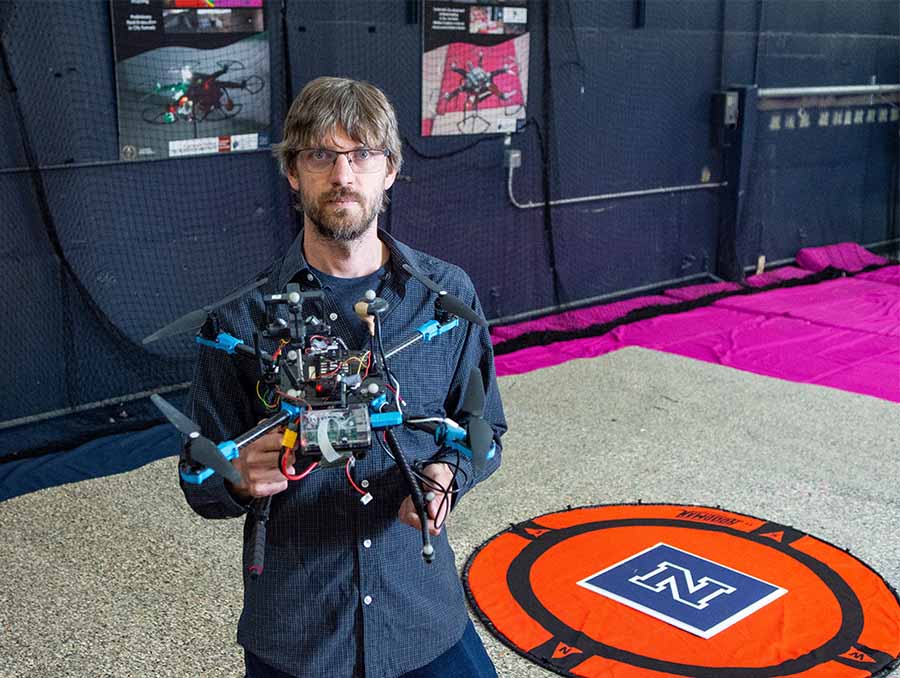
The Robotics Roundup is a weekly newspost going over some of the most exciting developments in robotics over the past week.
In today’s edition we have:
- 450-Million-Year-Old Organism Rebuilt as a “Soft” Robot
- A Dramatic Step Forward in Robotics
- Humans are far superior to robots
- AI robotics’ ‘GPT moment’ is near
- Fruit flies could hold the key to building resiliency in autonomous robots
450-Million-Year-Old Organism Rebuilt as a “Soft” Robot
Scientists have developed a soft robot called the “Rhombot” based on a 450-million-year-old marine organism known as the pleurocystitid. This robotic replica, created using flexible electronics and soft materials, aims to understand the biomechanics that drove evolution in the past. The field of study, called Paleobionics, combines soft robotics with paleontology to mimic ancient lifeforms and explore their movement and design. By studying the pleurocystitid, researchers found that increasing its stem length allowed for greater speed without increased energy expenditure. The success of the Rhombot has prompted further exploration into studying other extinct organisms.
A Dramatic Step Forward in Robotics
Researchers from the University of Maryland have developed a multidisciplinary project called DANCExDANCE that combines an ancient art form with interactive smart technology. In this project, a tiny robot glides across the body of a dancer, controlled by the audience through their smartphones. The goal of the project is to explore our evolving relationship with smart technology and bridge the gap between individuals and the digital collective on social media. The research collaboration was initially funded by Arts for All, an initiative at UMD that combines arts, sciences, and technology to develop new and innovative offerings.
Humans are far superior to robots
A study conducted by researchers at ETH Zurich compared 27 humanoid robots with humans and found that while robots have superior components, they are still not as capable as humans in performing various activities. The study focused on anatomically similar humanoid robots with two or four legs that can climb stairs, pass through doors, and pick up objects. The robots outperformed humans in terms of mechanical properties, such as microphones compared to ears or cameras compared to eyes. However, when it came to activities like walking, running, and endurance, humans were generally superior. The study suggests that despite advancements in robotics, robots still struggle to match human movement and perception. Nevertheless, researchers believe that with further advances in system engineering and control technology, more intelligent robots capable of interacting with humans will soon be developed.
AI robotics’ ‘GPT moment’ is near
The article discusses the potential of building AI-powered robots that can interact with the physical world and how it could revolutionize various industries. It draws parallels between the success of large language models like GPT and the potential for building a “GPT for robotics.” The core pillars that have enabled the success of language models, such as the foundation model approach, training on large and high-quality datasets, and reinforcement learning, could be applied to robotics. By taking a foundation model approach, building one AI that works across multiple tasks in the physical world becomes possible. However, training robots to interact with the physical world requires extensive high-quality data and the use of reinforcement learning. The article suggests that the growth trajectory of robotic foundation models is accelerating, and we can expect to see commercially viable robotic applications deployed at scale in the near future.
Overall, the article explores the potential of AI-powered robots and how they could transform various industries by enhancing repetitive work and adapting to changing circumstances in the physical world.
Fruit flies could hold the key to building resiliency in autonomous robots
Mechanical Engineering Assistant Professor Floris van Breugel has been awarded a $2 million grant from the National Science Foundation (NSF) to develop autonomous robots with the resilience of fruit flies. Modern robots often struggle to respond to new environments or damage, unlike living systems that can quickly adapt their behavior. Van Breugel’s project aims to translate the knowledge from fruit fly neuroscience to enhance the resilience of robotic systems. The research will involve collaboration with experts in insect neuroscience and will also provide research experiences to students and develop open-source content to bring neuroscience fluency to engineering students.

